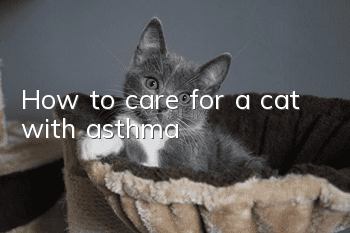How should cats protect themselves from the sun in hot summer?

In the hot summer, many people will apply a thick layer of sunscreen when going out, for fear of tanning and sunburn. What about cats? In the eyes of many people, they think that cats like to sleep in the sun, and that cats just like to bask in the sun.
But is it really good for cats to bask in the sun?
Moderate exposure to the sun is beneficial to cats. For example, for cats with cat ringworm, moderate exposure to the sun can speed up the recovery of cat ringworm.
However, if you are exposed to too much sun or the light intensity is too high, you are prone to health problems, especially in the hot summer.
Just like people, cats can get sunburned and even develop skin cancer.
Therefore, cats should also take sun protection measures when it is hot and sunny.
Generally speaking, measures that are effective for us are also effective for cats.
From a medical perspective, cat sunburn can also be called "solar dermatitis", which is a relatively common skin disease in sunny areas.
The areas most likely to be sunburned in cats are generally the ears, but the eyes and nose are also relatively sensitive areas.
Which cats are more sensitive?
For us humans, people with fair skin are usually more susceptible to sunburn, and the same is true for cats.
Since their skin lacks enough melanin, light-colored cats are more susceptible to sunburn, especially pure white cats.
Hair will protect the cat’s skin to a certain extent, but areas with less hair are more susceptible to direct sunlight.
Generally speaking, the following types of cats are prone to sunburn:
Pure white cats, especially their ears and noses
Colorful cat with white ears
Colorful cat with white nose
Hairless cat
Sun protection, sun protection, prevention is better than cure.
Therefore, when it comes to sunburn, prevention is a very important step. Some of the suggestions I give are as follows:
First,
Very simple, be sure to limit the time your cat is exposed to sunlight.
The sun's ultraviolet rays are strongest between 10 a.m. and 4 p.m.
Therefore, during this period, it is necessary to limit their exposure to the sun. If there are curtains, it is highly recommended to close the sunshades if there are curtains, especially in the sun room.
Second,
If you must keep your cat outdoors, find a place where it can get some shade.
If it drives with you, you should also pay attention to this issue.
Third,
Just like people, you can use sunscreen on cats. But be careful when choosing a product.
Choose baby-specific sunscreen. Such products are generally green and non-toxic, and there will be no problem even if the cat licks them.
In fact, many products for babies can be used by cats...after all, they are children.
Cat skin cancer is very common in some very hot parts of the world, such as the Australian Outback.
In some areas, some owners will dye the ears of light-colored cats permanently black or other dark colors to protect them from the sun.
The problem of cat sunburn is not alarmist at all, it really needs to be paid enough attention to.
China has a vast territory and the situation in hot areas may not be much better. However, pet medical care is lagging behind and parents generally lack medical knowledge, so there is a lack of relevant disease data.
How can we judge whether our cat has signs of sunburn at home?
Generally speaking, diagnosing sunburn depends on the season and the length of exposure to the sun.
If you are sunburned, you should be able to see signs of thermal burns in sensitive areas:
A minor sunburn will cause the skin (mainly the ears) to become slightly red.
Hair loss along the edges of the ears is very common.
At the same time, the skin in the sunburned area will become scaling, thickening, and itchy over time.
The cat may shake its head or even scratch itself, which may lead to bleeding or infection.
Based on the above description, you can make your own judgment.
Cat’s skin sunburn is also divided into three grades: one, two, three and three.
These three levels also range from mild to severe.
First degree sunburn,
Only the superficial layer of skin is involved. Hair (if any) will not fall out. The skin is red and there are no blisters.
Second degree sunburn,
Involves the surface layer and some deeper layers of skin. Not with our skinAlso, in cats, blisters are rare with burns of this magnitude. The skin is red and some skin layers may be exposed.
Third degree sunburn,
Will penetrate all superlayers of skin, possibly even the tissue beneath the skin. The skin on the ears and nose may appear white. Even dry and hard.
How to treat sunburn in cats?
The treatment method for sunburn should be based on the three levels I mentioned above. Different degrees of sunburn will be treated differently.
For first-degree sunburn, shave the hair in the sunburned area, then gently clean it with povidone-iodine or chlorhexidine, and then apply silver sulfadiazine cream. The effect is obvious for ordinary cats.
For second- and third-degree sunburns, treatment is more complicated and may sometimes require hospitalization.
In addition to treatments for first-degree sunburn, intravenous fluids, antibiotics, and first-degree blood tests may be needed.
The above solutions for sunburn also apply to burns and scalds.
Finally, let’s talk about the most serious form of skin cancer.
Excessive exposure to sunlight can cause squamous cell carcinoma.
Generally, when solar dermatitis becomes more and more serious, persistent ulcers and squamous cell carcinoma will appear if it continues to develop.
In the early stage, it usually appears on the ears and the top of the nose of white cats. Cats with white areas in these areas are also at greater risk.
The symptoms are more obvious, including incurable pain and bleeding.
Generally, surgery or chemotherapy is required. If it is discovered late, the treatment is of little significance.
There are more and more people raising pure white or white cats in China, so we must pay attention to the issue of sunburn.
Especially if your ears start to lose hair inexplicably, you should pay attention!
This issue is often ignored by most parents.
- What medicine should I take if my cat has sticky drool?
- How long does it take for a frightened cat to recover from paralysis of its hind legs?
- Why does a cat meow like a child crying?
- How to feed a two-month-old kitten
- How to train a cat to obey what you say? To train a cat, you must first understand the cat!
- What should I do if my cat won’t eat or drink after being neutered?
- What will happen if the cat doesn’t dry it after taking a bath?
- How to Treat Cat Ringworm in American Bobtail Cats
- Have you heard that Ragdoll cats are artificially bred species? Introduction to Ragdoll cat breeds!
- What should I do if my newborn kitten is in danger?



